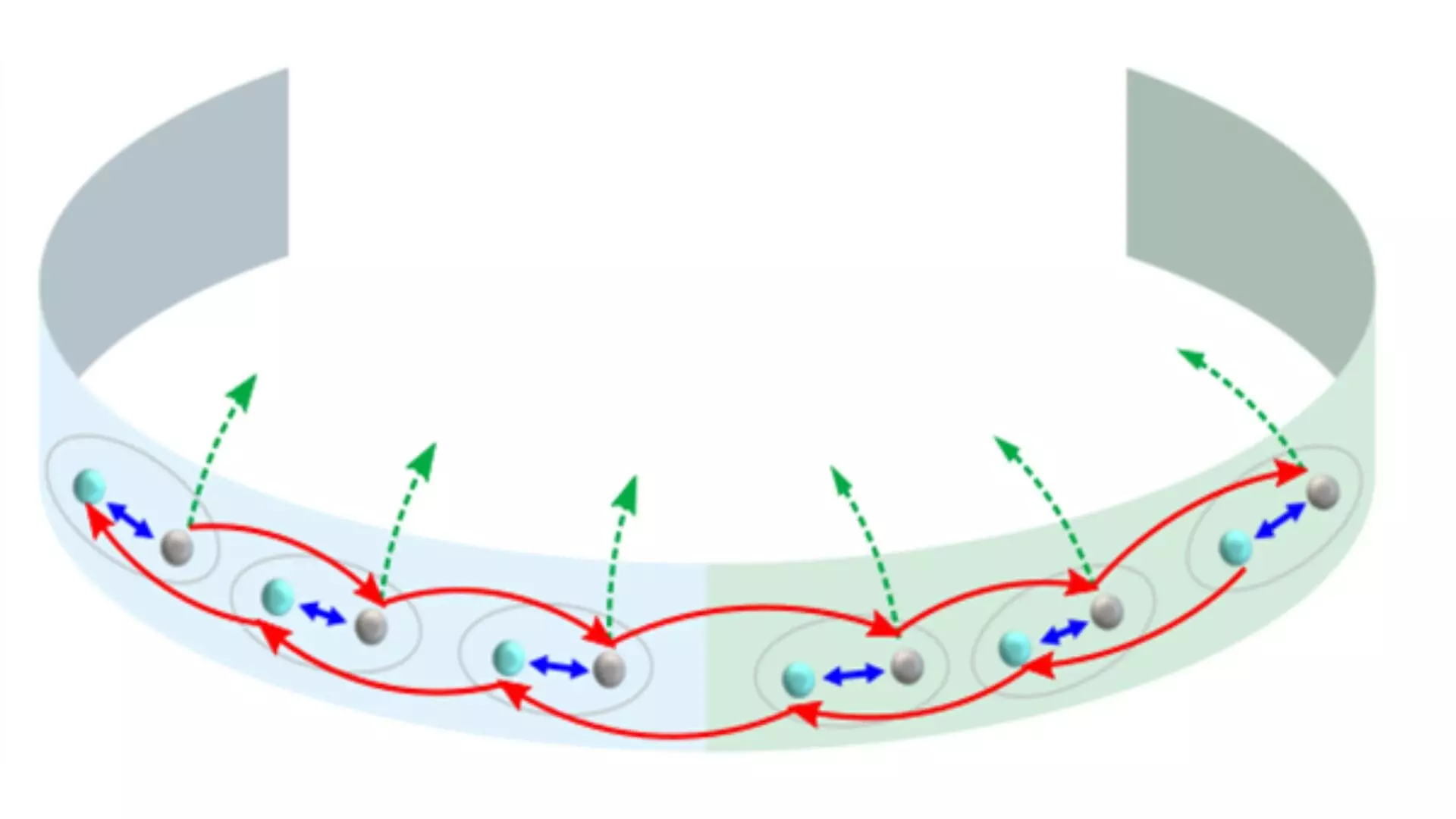Non-Hermitian systems have been gaining attention in recent years for their unique properties and their potential to unlock new insights into the behavior of real-world systems. In a groundbreaking study published in Physical Review Letters, scientists have successfully observed the first experimental evidence of non-Hermitian edge bursts in quantum dynamics. This exciting development opens up a new avenue for exploring the dynamics of non-Hermitian systems and their implications in photonics and condensed matter physics.
One of the driving forces behind the study of non-Hermitian systems is the discovery of the non-Hermitian skin effect (NHSE). This effect, characterized by the accumulation of eigenstates at the edges or boundaries of a system, reveals intriguing static properties that are not observed in Hermitian systems. The NHSE was first coined by Prof. Zhong Wang and his colleague in an earlier study, sparking a wave of interest in exploring the dynamic phenomena associated with non-Hermitian systems.
In non-Hermitian systems, operators do not equal their Hermitian conjugates, leading to complex eigenvalues and the emergence of unique phenomena like the NHSE. While previous studies have focused on static properties of non-Hermitian systems, the researchers in this study delved into the real-time dynamics of edge bursts. By using a one-dimensional quantum walk setup with photons, they were able to observe how the edge dynamics evolve over time, shedding light on the behavior of non-Hermitian systems with gain or loss mechanisms.
The experimental setup used by the researchers involved a quantum walk with photons in which probabilistic movement was determined by a quantum coin flip. By introducing a boundary into the system and manipulating the photon’s walk with optical tools such as beam splitters and wave plates, the researchers were able to study the edge dynamics in real-time. They observed an increase in the probability of photon loss at the boundary, confirming the existence of the non-Hermitian edge burst phenomenon.
One of the key findings of the study was the interplay between static localization (NHSE) and dynamic evolution (imaginary gap) in non-Hermitian systems. The researchers found that the non-Hermitian edge burst only occurs when two conditions are met simultaneously: the accumulation of eigenstates near the edges and the closure of the imaginary gap in the energy spectrum. This delicate balance highlights the intricate relationship between the topology of the bulk and the sharp features at the boundaries of non-Hermitian systems.
The experimental observation of real-time edge bursts in non-Hermitian systems has opened up new possibilities for harnessing this phenomenon in practical applications. The spatial and spectral sensitivity of the edge burst could pave the way for localized light harvesting or quantum sensing technologies. Moreover, the study’s findings hint at the existence of other universal scaling relations in non-Hermitian systems, pointing towards exciting avenues for future research in this field.
The exploration of non-Hermitian edge bursts in quantum dynamics represents a significant step towards understanding the complex behavior of non-Hermitian systems and their potential applications in various fields. By bridging the gap between static localization and dynamic evolution, this study offers valuable insights into the fundamental properties of non-Hermitian systems and their relevance in real-world applications.


Leave a Reply